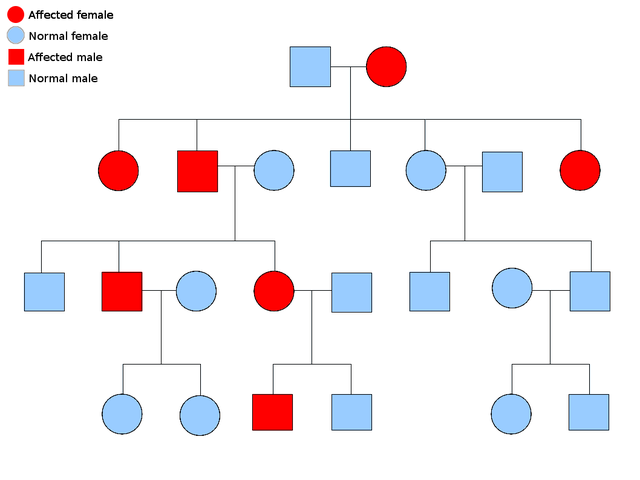Difference between Dominant gene and Recessive Gene
‘I got a dimple because my dad has one.’ ‘My hair is curly because my mom has curly hair.’ These are some common examples of inherited traits we see around us. But what helps a trait to pass down through generations? Our genes determine our traits.
Genes are the blue print of all living organisms- plants and animals. They transfer the information from one generation of species to the next when organisms of the same species mate and reproduce. This is why the offspring resembles either or both of its parents. Gene is a DNA sequence which is the unit of heredity located at a fixed location on the chromosome. Every characteristic of an organism is coded through a gene. All genes have variants called as alleles that are responsible for the variation present is a particular characteristic like colour of eyes, hair colour, height of an individual, size of nose, high or low level of resistance against a disease, low or high susceptibility to diseases such as diabetes, hypertension, obesity, presence or absence of genetic diseases etc.
The parents of the child carry the alleles for the same gene. All organisms have chromosomal pairs. During the process of fertilisation of the egg and sperm, each of them carries a single set of chromosomes coming from the mother and father respectively. For example human beings have 46 chromosomes or 23 pairs of chromosomes. The chromosomal pair splits and only one half of the set goes into the sperm and the ovum. This is to keep the chromosomal number same after fertilisation. Number of chromosomes is specific to every species which cannot change. After fertilisation the chromosomal number is restored.
Expression of a particular trait depends whether the gene representing that trait is dominant or recessive.
Presence of a dominant gene will decide whether a particular trait (phenotype) should be passed on or not. A dominant allele of the gene is represented by letters in upper case. A recessive allele of the gene is represented in lower case. When a dominant and recessive allele is present in the same individual, it is the dominant trait that is expressed. If an individual has either dominant alleles (or both recessive alleles) for the same gene, he is known as homozygous dominant or homozygous recessive. If he has one dominant and one recessive allele of the gene, he is called as heterozygous.
Let us understand this with an example. Let us denote curly hair allele with C and straight hair allele with c. If an individual has a combination of Cc (heterozygous) at the gene that decides hair characteristics on his chromosome, he will have curly hair as the dominant allele expresses itself and the recessive allele remains dormant. In case he has a cc combination, his hair will be straight as recessive allele will express itself in the absence of dominant allele.
Let us take another example about height of an individual. We often say height of the child is decided by the height of his parents. Let us see how – Suppose tall height is denoted by H (dominant allele) and short height is denoted by h (recessive allele).
So if the child has either first or fourth allele combination, he will be tall and will be said to resemble the taller parent. In this case the dominant allele for height gets expressed over the recessive allele to give a tall trait (phenotype). But if the child has either second or third combination, he will be short and will be said to resemble the shorter parent. In this case the recessive allele is expressed as the dominant allele is absent. This is known as complete dominance
There is another case called as codominance which is seen in blood group. Human blood group gene has A and B antigen allele which are equally dominant. Presence of both in an individual, will give traits of both and his blood group will be AB.
A case of partial dominance is seen when both dominant and recessive allele of the genes express themselves partially to give a third variant. For example when a red colour flower is cross bred with a white colour one, it gives pink progeny.
Genetic combination decides the total makeup of the progeny. Genotype determines phenotype.
Dominant traits are passed on and recessive traits stay dormant.
- Difference Between Flu and Fever - September 2, 2015
- Difference Between Haemoglobin and Iron - July 10, 2015
- Difference between Purpura and Ecchymosis - July 2, 2015
Search DifferenceBetween.net :
Leave a Response
References :
[0]http://www.nature.com/scitable/topicpage/genetic-dominance-genotype-phenotype-relationships-489
[1]http://en.wikipedia.org/wiki/Dominance_(genetics)
[2]http://en.wikipedia.org/wiki/Cancer_syndrome


